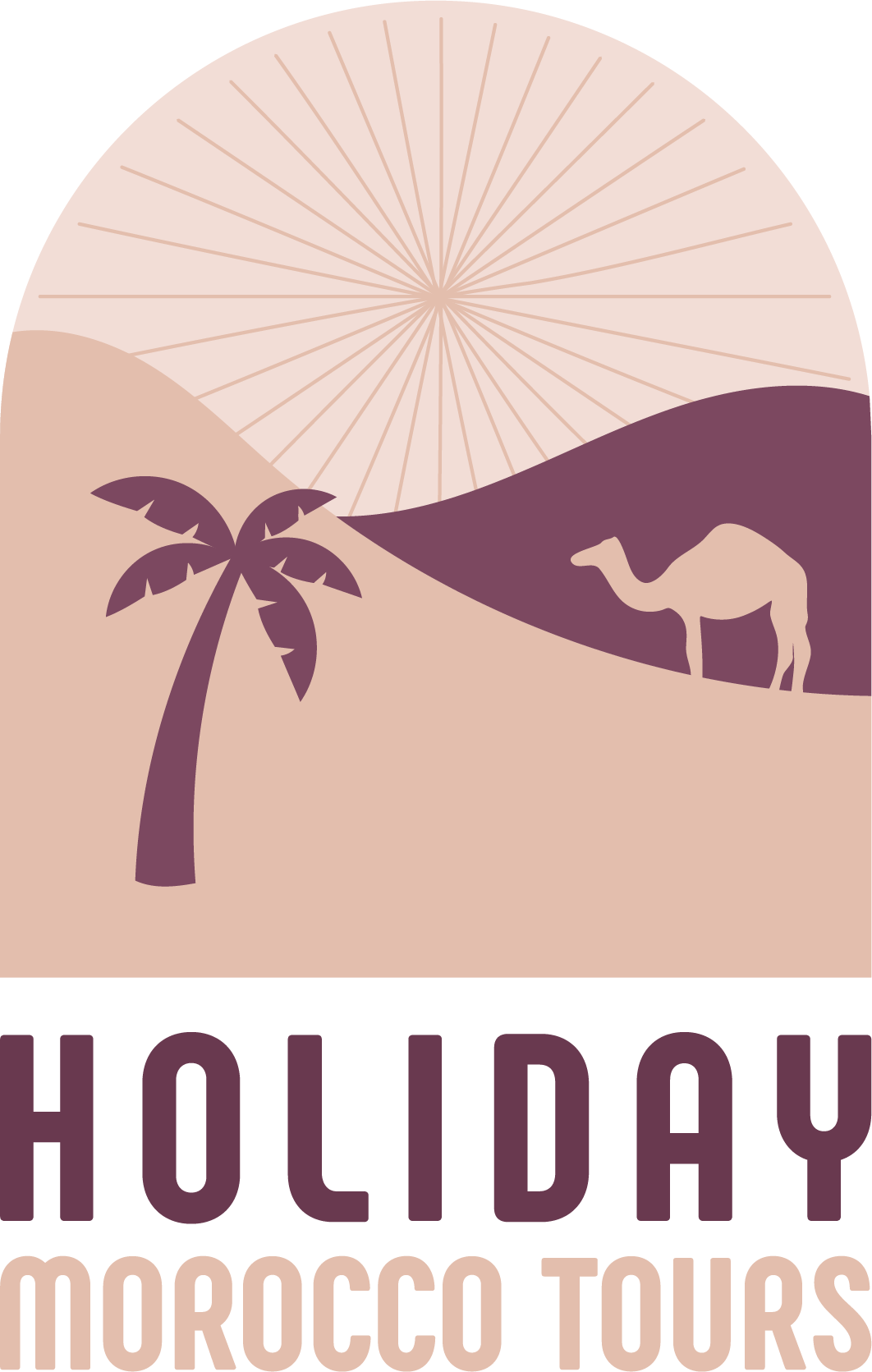A First-Timer’s Guide to Morocco
Planning your first time in Morocco? You’re in for an unforgettable adventure. This North African gem is where ancient history meets modern charm, and where every city has a unique rhythm and flavor. From the vibrant souks of Marrakech to the blue alleys of Chefchaouen, Morocco offers a rich tapestry of sights, sounds, and experiences.
In this comprehensive guide, we’ll walk you through everything you need to know for your first trip to Morocco — including when to go, where to stay, top places to visit, what to expect, and how to make the most of your journey. Plus, we’ll link you to in-depth guides for each destination and experience so you can dive deeper.
Whether you’re dreaming of camel rides in the Sahara, sipping mint tea in a hidden riad, or wandering through UNESCO-listed medinas, this guide is your perfect starting point.
Why Visit Morocco?
For anyone experiencing Morocco for the first time, the country can feel like a dream brought to life. Few places in the world offer such a dramatic blend of culture, history, and geography — all within reach of a single itinerary.
Here’s why Morocco is a must-visit for first-timers:
- Diverse Landscapes – From the snow-capped Atlas Mountains to sweeping deserts, palm-fringed oases, and rugged coastlines, Morocco’s natural beauty is breathtaking.
- Cultural Richness – Morocco is a meeting point of Arab, Berber, African, and European influences. You’ll find it in the architecture, languages, art, and daily life.
- Historic Cities – Walk through ancient medinas in cities like Fes and Marrakech, where the streets are alive with artisans, storytellers, and centuries of history.
- Incredible Cuisine – First-time visitors to Morocco will fall in love with tagines, couscous, harira soup, pastilla, and the ever-present mint tea.
- Unique Experiences – Sleep in a riad, bathe in a traditional hammam, ride camels across sand dunes, or shop in centuries-old souks.
Morocco’s charm lies in its contrasts — old and new, peaceful and chaotic, luxurious and earthy. It’s a country that awakens the senses and leaves a lasting impression.
Best Time to Visit Morocco
When planning your first time in Morocco, timing can make a big difference. Morocco’s climate varies by region, but in general, spring and autumn are the most comfortable seasons for travel.
Spring (March to May)
Ideal for exploring cities, hiking the Atlas Mountains, and seeing the countryside in bloom. Daytime temperatures are pleasant, and nights are cool — perfect for sightseeing and desert trips.
Autumn (September to November)
Another sweet spot for first-time visitors. The intense summer heat has faded, but it’s still warm enough for beach getaways, desert tours, and city walks without the crowds of peak summer.
Summer (June to August)
While coastal cities like Essaouira remain breezy and comfortable, inland areas like Marrakech, Fes, and the Sahara can become extremely hot — often over 40°C. Still, it’s doable if you’re prepared for the heat and want fewer tourists.
Winter (December to February)
Mild in cities like Marrakech and Agadir, but snow falls in the Atlas Mountains, making it a great time for skiing in places like Oukaïmeden. Desert nights can get very cold, so pack accordingly.
Top Destinations to Explore
For your first time in Morocco, it’s important to pick the right mix of destinations — each offering a distinct vibe. Below are some must-visit places, with links to more detailed guides for each city.
Marrakech – The Red City
Marrakech pulses with life and color. Its UNESCO-listed medina is a labyrinth of narrow alleys packed with artisans, spice vendors, and storytellers. Key sights include the stunning Bahia Palace, the tranquil Majorelle Garden once owned by Yves Saint Laurent, and the lively Jemaa el-Fnaa square — a sensory overload of snake charmers, street food stalls, and musicians. Don’t miss visiting the Saadian Tombs and wandering through the Souk Semmarine for crafts and textiles. Marrakech also offers vibrant nightlife and rooftop cafes perfect for people watching.
Read more: How to Spend a Fun Holiday in Marrakech: 14 Thigns To Do
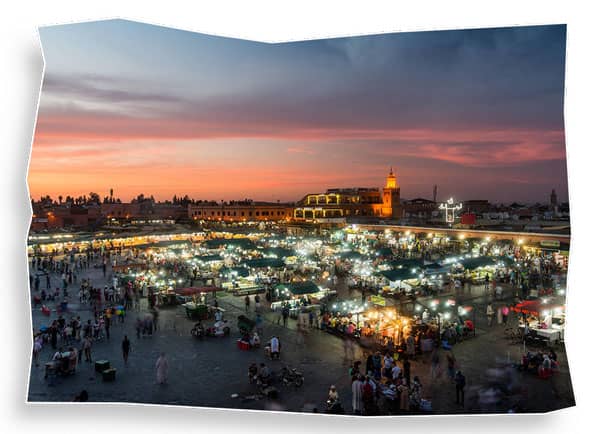
Fes – Morocco’s Cultural Soul
Fes is considered Morocco’s spiritual and intellectual capital. The Fes el-Bali medina is one of the largest car-free urban areas in the world, full of stunning medieval architecture. Highlights include the Al Quaraouiyine University (founded in 859 AD), the colorful Chouara Tannery, and the intricate tile work of Bou Inania Madrasa. Fes offers a more traditional and less touristy vibe than Marrakech, with winding alleys to get lost in and numerous artisan workshops producing ceramics, leather goods, and textiles.
Read more: How to Spend a Fun Holiday in Fes: Top 10 Things
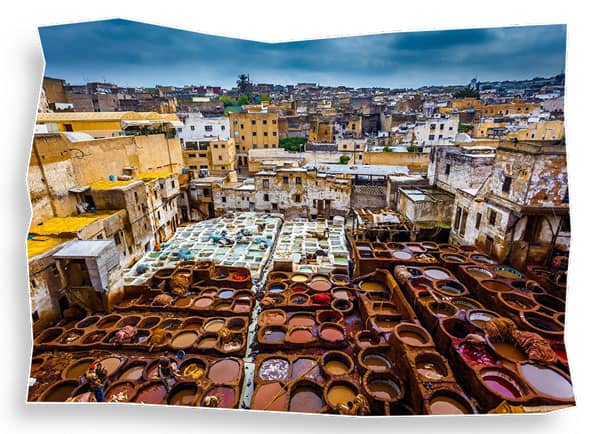
Chefchaouen – The Blue Pearl
Nestled in the Rif Mountains, Chefchaouen’s streets are famously painted in various shades of blue, creating a dreamy, peaceful atmosphere. The town is smaller and quieter, ideal for leisurely strolls and photography. Visit the Kasbah Museum, hike to the Spanish Mosque for panoramic views, and relax in cozy cafés offering fresh goat cheese and mint tea. The surrounding Rif Mountains also offer hiking trails and waterfalls for nature lovers.
Read more: Chefchaouen Travel Guide: Explore Morocco’s Blue Pearl
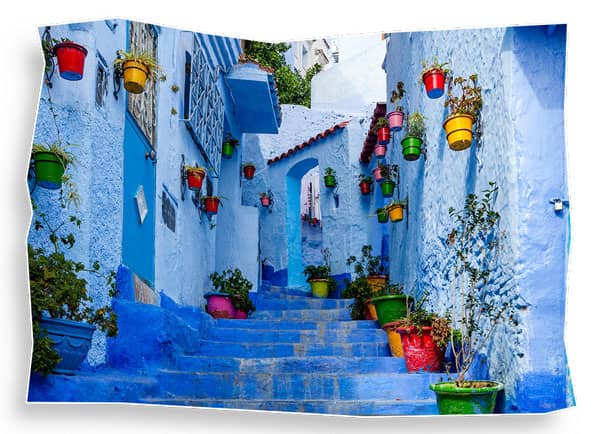
Rabat – The Capital City
Rabat is Morocco’s political and administrative center, blending modernity with history. The Kasbah of the Udayas, a peaceful fortress by the ocean, is a must-see with its blue-and-white painted walls and Andalusian gardens. Don’t miss the Hassan Tower, an unfinished minaret from the 12th century, and the nearby Mausoleum of Mohammed V, known for its beautiful architecture. Rabat’s laid-back vibe and clean streets make it an easy introduction to Moroccan urban life.
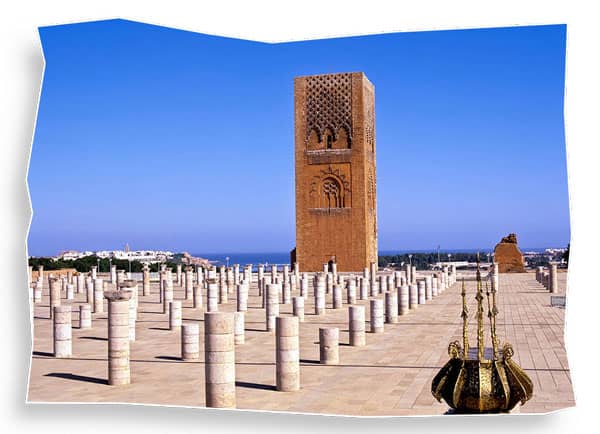
Casablanca – The Modern Face of Morocco
Casablanca, Morocco’s largest city, is a bustling economic hub but has its share of charm. The Hassan II Mosque dominates the skyline — one of the few mosques open to non-Muslim visitors, featuring stunning seaside views and intricate craftsmanship. Explore the Habous Quarter for a quieter shopping experience, filled with bookstores, cafés, and artisan shops. Casablanca’s architecture mixes French colonial, art deco, and modern styles. While not traditionally a tourist hotspot, it offers a glimpse of contemporary Moroccan life.
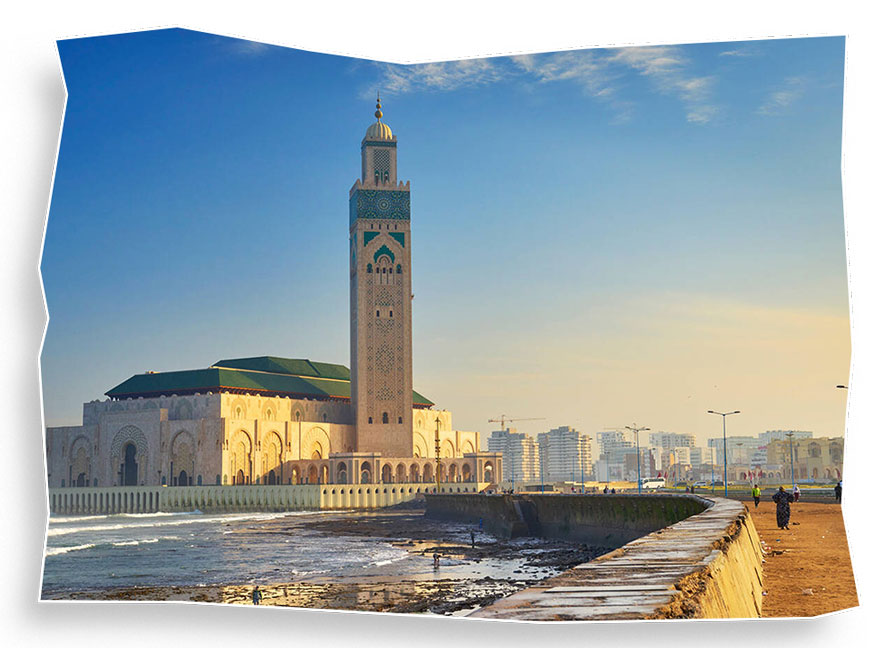
Essaouira – Coastal Charm
Essaouira offers a relaxed contrast to Morocco’s busy cities. Its UNESCO-listed medina is famous for whitewashed buildings with blue shutters and the smell of fresh sea air. Walk the ancient ramparts, watch fishermen unload their catch at the bustling harbor, or enjoy fresh seafood at local restaurants. The town is also a hotspot for windsurfing and kitesurfing thanks to steady Atlantic winds. Essaouira’s artsy vibe includes galleries, music festivals, and laid-back cafés.
Read more: Essaouira-Mogadore: What to Do in Essaouira, Morocco?
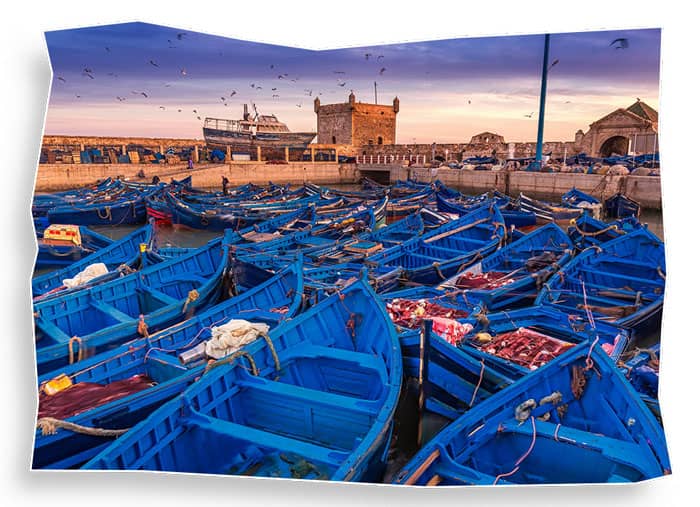
Ouarzazate & The Sahara – Desert Adventures
Known as the “Gateway to the Sahara,” Ouarzazate is a base for exploring Morocco’s vast desert landscapes. Visit the impressive Aït Benhaddou, a UNESCO-listed ksar and backdrop for many films like Gladiator and Game of Thrones. From here, you can embark on camel treks into the Sahara, spending nights in traditional Berber camps under spectacular starry skies. The surrounding valleys, including Dades and Todra, offer stunning rock formations and opportunities for hiking or 4×4 adventures.
Read more: The Ultimate Guide to the Morocco Sahara Desert
Each destination can offer something different for your first trip — from culture and history to nature and relaxation. If time allows, mix city life with the coast or desert for a full Moroccan experience.
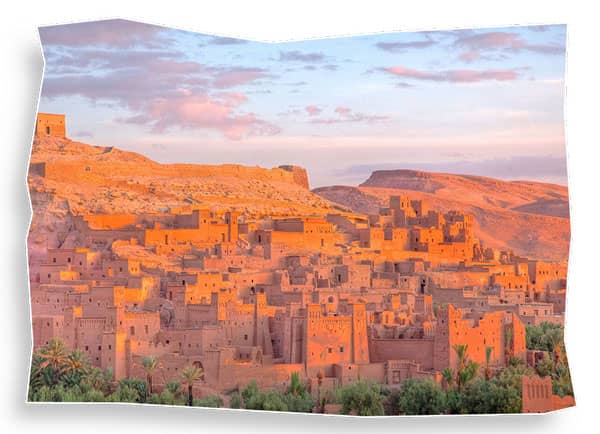
Planning your first trip to Morocco?
Explore our full collection of Moroccan city guides, travel tips, and cultural insights to make your journey unforgettable.
Must-Have Moroccan Experiences
Your first time in Morocco isn’t just about the places you go — it’s also about the unforgettable things you do. Here are some essential experiences that will give you a true taste of Moroccan culture, tradition, and adventure.
Explore a Traditional Souk
Lose yourself in the maze-like markets of Marrakech, Fes, or Tangier. These bustling souks offer everything from handwoven rugs and leather goods to spices, lamps, and local crafts. Don’t be afraid to haggle — it’s part of the fun.
Stay in a Riad
Swap standard hotels for a riad — a traditional Moroccan guesthouse centered around a courtyard. It’s the best way to experience Moroccan architecture, hospitality, and often, homemade breakfasts.
Ride a Camel in the Sahara Desert
No first-time Morocco trip is complete without a camel trek into the golden dunes of Merzouga or Zagora. Spend the night in a desert camp under a sky full of stars — it’s pure magic.
Try Moroccan Cuisine
Indulge in flavorful tagines, couscous dishes, pastilla (a sweet and savory pie), and warm bowls of harira soup. Sip mint tea like a local and try street snacks like msemen (Moroccan pancakes) or snail soup if you’re feeling adventurous.
Want more? Read our guide: [Must-Try Moroccan Dishes for First-Time Visitors]
Experience a Hammam
A hammam (Moroccan steam bath) is a traditional wellness ritual that involves exfoliation, deep cleansing, and sometimes even a massage. Great for relaxation after a day of exploring.
Hike in the Atlas Mountains
If you love nature and adventure, don’t miss the chance to trek in the Atlas Mountains. The scenery is stunning, and you can visit Berber villages for a deeper cultural connection.
Visit a Kasbah
Step back in time by exploring a centuries-old kasbah — fortified homes or towns. Aït Benhaddou near Ouarzazate is one of the most iconic, often used as a film set.
These experiences will leave you with stories to tell and memories that define your journey. Morocco is a land of sensory depth — and these moments are what bring it to life.
Culture & Etiquette Tips
Understanding Moroccan customs and social norms can make your first time in Morocco smoother, more respectful, and far more rewarding. Here are essential tips to help you navigate the culture confidently.
Language Basics
- Arabic and Tamazight (Berber) are the official languages.
- French is widely spoken, especially in cities, hotels, and shops.
- English is increasingly used in tourist areas, but learning a few basic phrases in Arabic or French is appreciated.
Useful phrases:
- Salam Alaikum – Peace be upon you (common greeting)
- Shukran – Thank you
- La shukran – No, thank you
Dress Code
- Morocco is moderately conservative. While you don’t need to cover head-to-toe, dressing modestly shows respect.
- Women should consider covering shoulders and knees, especially in rural areas or religious sites.
- Men should avoid going shirtless or wearing tank tops in public spaces.
Religious Customs
- Morocco is a Muslim-majority country. Be mindful during Ramadan: avoid eating, drinking, or smoking in public during daylight hours.
- When visiting mosques (many are closed to non-Muslims), dress respectfully and ask permission if unsure.
Tipping (Baksheesh)
- Tipping is expected in many situations:
- 5–10% in restaurants
- A few dirhams for porters, guides, and drivers
- Small change for helpful locals or photo permissions
Bargaining is Normal
- Haggling is part of the shopping experience, especially in souks. Don’t be shy, and always keep it friendly. Start low, smile, and enjoy the process.
Public Behavior
- Public displays of affection are discouraged.
- Gender roles may feel different; it’s common for men to greet one another with cheek kisses or handshakes.
- Women traveling alone are generally safe but may experience unwanted attention. Dress modestly and be assertive if necessary.
Photography Etiquette
- Always ask before taking someone’s photo — especially in rural areas or souks.
- Some locals may ask for a small tip in return.
Respecting the local culture not only enriches your experience but also opens doors to genuine connections and kindness — something Morocco is full of.
How to Get Around
Getting around efficiently will make your first time in Morocco much smoother. The country has a surprisingly robust transportation system — whether you’re traveling between cities or navigating within a medina.
Trains
Morocco has a modern and reliable train network, especially between major cities like Casablanca, Rabat, Fes, and Marrakech.
- Operated by ONCF
- First and second class options
- Affordable, clean, and safe
- High-speed train (Al Boraq) connects Casablanca to Tangier in just over 2 hours
Tip: Book tickets online or at the station in advance for comfort class.
Long-Distance Buses
For cities and towns not served by train:
- CTM and Supratours are the top choices — comfortable, air-conditioned, and punctual
- Tickets can be booked online or in person
- Great option for budget travelers or remote destinations
Taxis
- Petit taxis operate within cities (small, metered, but often you must negotiate).
- Grand taxis are shared intercity vehicles — often old Mercedes sedans — with fixed routes and multiple passengers.
For comfort and convenience, you can hire a whole grand taxi for private use at a negotiated price.
Car Rentals
- Ideal for exploring less-visited places like the Atlas Mountains, Sahara, or small Berber villages.
- Roads are mostly in good condition, but driving in medinas or city centers can be stressful.
- You’ll need an international driver’s license in most cases.
Walking
- In medinas (old towns), walking is the only option — streets are narrow, often maze-like, and filled with foot traffic, carts, and vendors.
- Wear comfortable shoes and be prepared to get a bit lost (that’s part of the charm).
Other Options
- Bicycle or scooter rentals are available in coastal towns like Essaouira.
- Guided tours and private drivers are a great option if you prefer convenience and curated experiences, especially for desert trips.
Transportation in Morocco can feel chaotic at times, but it’s generally affordable and safe. Just bring some patience and flexibility — and you’ll get where you need to go.
Where to Stay
One of the most memorable parts of your first time in Morocco will likely be where you sleep. Morocco offers a variety of accommodations — from centuries-old riads to luxurious desert camps and boutique hotels.
Riads (Traditional Moroccan Guesthouses)
- Typically found in the heart of the medina.
- Feature a central courtyard, mosaic tiles, and rooftop terraces.
- Often family-run with warm hospitality and homemade Moroccan breakfasts.
- Ideal for first-timers looking to experience authentic Moroccan architecture and charm.
Tip: Check if your riad offers airport transfers or guided medina tours — many do!
Hotels & Resorts
- International and Moroccan-run hotels are available in all major cities.
- Resorts with pools and modern amenities are common in Marrakech, Agadir, and Casablanca.
- Good for travelers who want comfort, predictability, or larger rooms.
Desert Camps
- A must for anyone heading to Merzouga or the Zagora desert.
- Range from basic Bedouin tents to luxury camps with en-suite bathrooms.
- Usually include camel rides, local music, and meals under the stars.
Tip: Choose a camp with good reviews and confirmed transport logistics. The desert is remote!
Guesthouses & Mountain Lodges
- Found in the Atlas Mountains, Berber villages, or rural valleys like Dades and Ourika.
- Great for hiking, local immersion, and peaceful escapes.
- Often include homemade meals and shared spaces for mingling with other travelers.
Airbnb & Vacation Rentals
- Widely available in cities like Marrakech, Casablanca, and Tangier.
- Best for groups or longer stays.
- Choose listings with many reviews, and double-check medina access if arriving late.
Wherever you stay, make sure to read reviews and check the location — especially in the medinas where GPS can be unreliable. Riads are often hidden behind unmarked doors, so don’t hesitate to ask for directions or arrange pickup when possible.
Planning your first trip to Morocco?
Explore our full collection of Moroccan city guides, travel tips, and cultural insights to make your journey unforgettable.
Travel Tips for First-Timers
Your first time in Morocco will be smoother and more enjoyable if you keep these practical tips in mind:
Currency & Payments
- The Moroccan dirham (MAD) is the local currency and is not convertible outside Morocco, so exchange what you need locally.
- Cash is king, especially in souks and smaller towns — carry enough small bills and coins.
- Credit and debit cards are accepted in larger hotels, restaurants, and shops but less so in markets or rural areas.
- ATMs are widely available in cities but may be scarce in remote places.
SIM Cards & Internet
- Buying a local SIM card (from Maroc Telecom, Orange, or Inwi) is affordable and easy — just bring your passport.
- Free Wi-Fi is common in riads, cafes, and hotels but can be slow or unreliable.
Visas & Entry Requirements
- Many nationalities, including UK, US, and EU citizens, do not need a visa for stays up to 90 days.
- Always check the latest requirements before traveling.
Safety & Scams
- Morocco is generally safe, but petty crime like pickpocketing can happen in crowded places.
- Beware of over-friendly strangers offering unsolicited help or tours — politely decline and walk away if uncomfortable.
- Use official taxis, reputable guides, and pre-booked tours when possible.
Packing Tips
- Pack light, breathable clothing but also layers for cooler evenings, especially in the desert or mountains.
- Comfortable walking shoes are a must.
- Bring sunscreen, a hat, and reusable water bottles.
- A small first aid kit and any personal medications are recommended.
Cultural Awareness
- Be patient with the slower pace and unexpected delays — part of the charm of Morocco’s hospitality.
- Keep an open mind and be ready to adapt.
These tips will help you navigate Morocco confidently and enjoy your trip to the fullest.
Suggested Itineraries for First-Time Visitors
Planning your first time in Morocco? Here are some tried-and-true itineraries to help you make the most of your trip, whether you have one week or two.
7-Day Highlights Itinerary
- Day 1-2: Marrakech — Explore the medina, souks, and Jemaa el-Fnaa square. Stay in a riad.
- Day 3: Day trip to the Atlas Mountains or Essaouira (coast).
- Day 4-5: Fes — Wander the ancient medina, visit tanneries and artisan quarters.
- Day 6-7: Sahara Desert — Overnight camel trek and camp in Merzouga or Zagora.
10-Day Cultural Immersion Itinerary
- Days 1-3: Marrakech and Essaouira
- Days 4-5: Casablanca and Rabat
- Days 6-7: Fes and Meknes
- Days 8-10: Sahara Desert and Ouarzazate
This itinerary mixes coastal towns, imperial cities, and desert adventure.
14-Day Classic Morocco Loop
- Days 1-3: Casablanca, Rabat, and Chefchaouen
- Days 4-6: Fes and Meknes
- Days 7-9: Marrakech and the Atlas Mountains
- Days 10-12: Sahara Desert and Ouarzazate
- Days 13-14: Essaouira and coastal relaxation
With any itinerary, factor in your travel pace, interests, and how much time you want to spend relaxing vs. exploring.
Final Thoughts
Your first time in Morocco will be a whirlwind of vibrant colors, unforgettable flavors, and warm hospitality. The country’s rich culture, stunning landscapes, and diverse cities offer something for every traveler — whether you crave adventure, history, or relaxation.
While Morocco can sometimes feel intense or overwhelming, embracing the experience with an open mind and patience will reward you with memories that last a lifetime.
Don’t forget to explore our in-depth guides on cities, experiences, and travel tips linked throughout this post to help plan your perfect Moroccan adventure.
